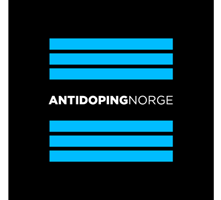The Punishment/Reward (PR) Method
By Charles Staley, B.Sc, MSS
Director, Staley Training Systems
http://www.staleytraining.com
What qualities, attributes, or behaviors should you be focusing on in your training? Are they the attributes that you truly prioritize, or maybe not?
*Do you spent most of your quality training time chasing new 1RM`s when you`ve got chronic orthopedic issues that threaten to sideline you in the very near future?
*Do you have impressive "gym numbers" that you`ve never replicated in competition?
*Do you have a terrible time cutting weight for meets, and yet your diet is still a mess?
*Do you have circus-level wobble-board skills but an embarrassingly puny deadlift?
*Is your paused bench press 90 pounds less than your "touch and go" bench?
If you see yourself in one or more of the above scenarios, my sole consolation for you is that its only human nature- we all tend to savor what we do best, and avoid what we do worst. The opposite of this (which few of us actually do) is what Canadian journalist and pop sociologist Malcolm Gladwell calls "deliberate practice."
Gladwell`s research indicates that it takes 10,000 hours of this thankless toil to reach a high level of proficiency in your chosen craft. To put that in numbers you can more readily appreciate, if you train 4 times a week at 90 minutes per workout, you`d have to train for over 32 years in order to attain mastery. And that`s only if you`re employing deliberate practice, which you`re probably not: deliberate practice is characterized by 3 tenets:
1. Focus on technique as opposed to outcome.
2. Set specific goals.
3. Obtain immediate quality feedback, and use it.
Even if you`ve been exposed to this information, it`s difficult to continuously perform deliberate practice, because by definition it requires attending to your weak points, while putting your strengths on the back burner. Which isn`t all that fun (until much later of course, when you start collecting your medals amidst hushed rumors of your supposed good genetics and steroid use)
This article is about a system I`ve created to get you to do the right things in training- it`s a way to make deliberate practice more palatable. I call it the PR Model, and it`s based on a simple behavior modification system that`s so effective, it`s prominently highlighted in nearly every major religion: punishment and reward.
Your parents no doubt implemented this exact system at mealtime when you were a kid: if you ate your dinner, you got dessert. No dinner, no dessert. Anyway, that`s how it worked at my house.
The gist of it is simple: if you do the right thing, you get a reward. And of course if you do the wrong thing (or fail to do the right thing), you get punished.
Before I explain how the system works in the context of your training, you`ll need to determine three things:
1. What is "the right thing" for you right now?
2. What`s an appropriate reward?
3. And lastly, what`s an effective punishment?
I`ll share how I answered these questions for myself recently, which should help you build a similarly-effective system for yourself.
I`ve had a problem with my snatch for a long time now. What happens is that everything goes great until I reach about 85 percent of my max, and then I have a strong tendency to over-extend the finish of the pull, which causes the bar to loop away from me, which then causes me to miss the snatch behind me as I settle into the full squat. It`s frustrating, because I`ve got plenty of horsepower to make these snatches, but I miss them due to this technical error.
In competition, missing my 2nd and/or 3rd snatches puts me in a psychological rut for the clean and jerk. Successful competition for me means a successful snatch. So I needed a way to solve this problem. My solution (which is still a work in progress) is what lead me to the PR Model:
I decided that I would plan to hit 5 singles with a weight that I typically have over-rotation problems with- 70 kilograms (154 pounds). The goal was simple: make 5 out of 5 singles with no misses (and more specifically, no misses behind). If I made all 5, I`d get a reward. If I had any misses, I`d go back to the drawing board next workout, and for as many workouts as necessary, until I hit all 5 snatches.
I`m sure you`re wondering what my reward is. It`s allowing myself to take one heavier single. To me this is "fun." To you, the reward could be anything from a post-workout ice cream cone to shopping for new workout clothes to skipping your post-workout stretching routine. Ideally the reward shouldn`t be anything significantly destructive of course, but it should be gratifying on some level.
The punishment in my case is simply the denial of reward- I don`t get to take a heavier single. For you it might be something different. In developing the training schedule for master`s weightlifter Troy Paradiso, failure to hit the indicated numbers in the snatch or clean and jerk resulted in having to do clean pulls (an exercise he was relatively weak on, and one we theorized would improve his two competitive lifts): If he made all assigned Clean and jerks for example, he didn`t have to do any pulls. If he missed one clean & jerk, his punishment was one set of pulls. Two misses- two sets of pulls. And so on.
The applications of this system are virtually limitless. Additionally, the system is flexible enough to change as your needs change.
The PR method can be applied to diet as well. For example, if/when you reach a body composition milestone, you get a "cheat meal."
3 Steps to Making The PR Method Work For You
The first step is to make a list of your unproductive habits, behaviors or tendencies. This isn`t about "good versus bad," it`s just a matter of identifying behaviors that either take you further away from your goals, or that displace more productive behaviors. Your list might include things like staying up too late the night before workouts, eating too much simple carbohydrate, always focusing on maximum singles when your weakness is lack of hypertrophy, spending too much time on "fun" exercises that don`t take you closer to your goal, being too reliant on support gear, or neglecting a mobility issue.
The second step is determining the "punishment." I personally like the dessert parallel here- if you do a lot of good things, you get to have a little bit of fun. The fun in question shouldn`t be terribly damaging as I noted earlier, but it should be gratifying.
The third and final step is developing parameters for your PR system. If you do this (what?) then you get to do this (what?). Make sure you define these parameters carefully, so there`s no "wiggle room" for cheating.
Finally, if you have a coach, training partner, or group that you train with, alert them to what you`re up to, and ask them to help keep you honest. Social support often makes all the difference when you`re pursuing challenging goals.







